Reducing 14hrs of job admin p/wk for Tradies
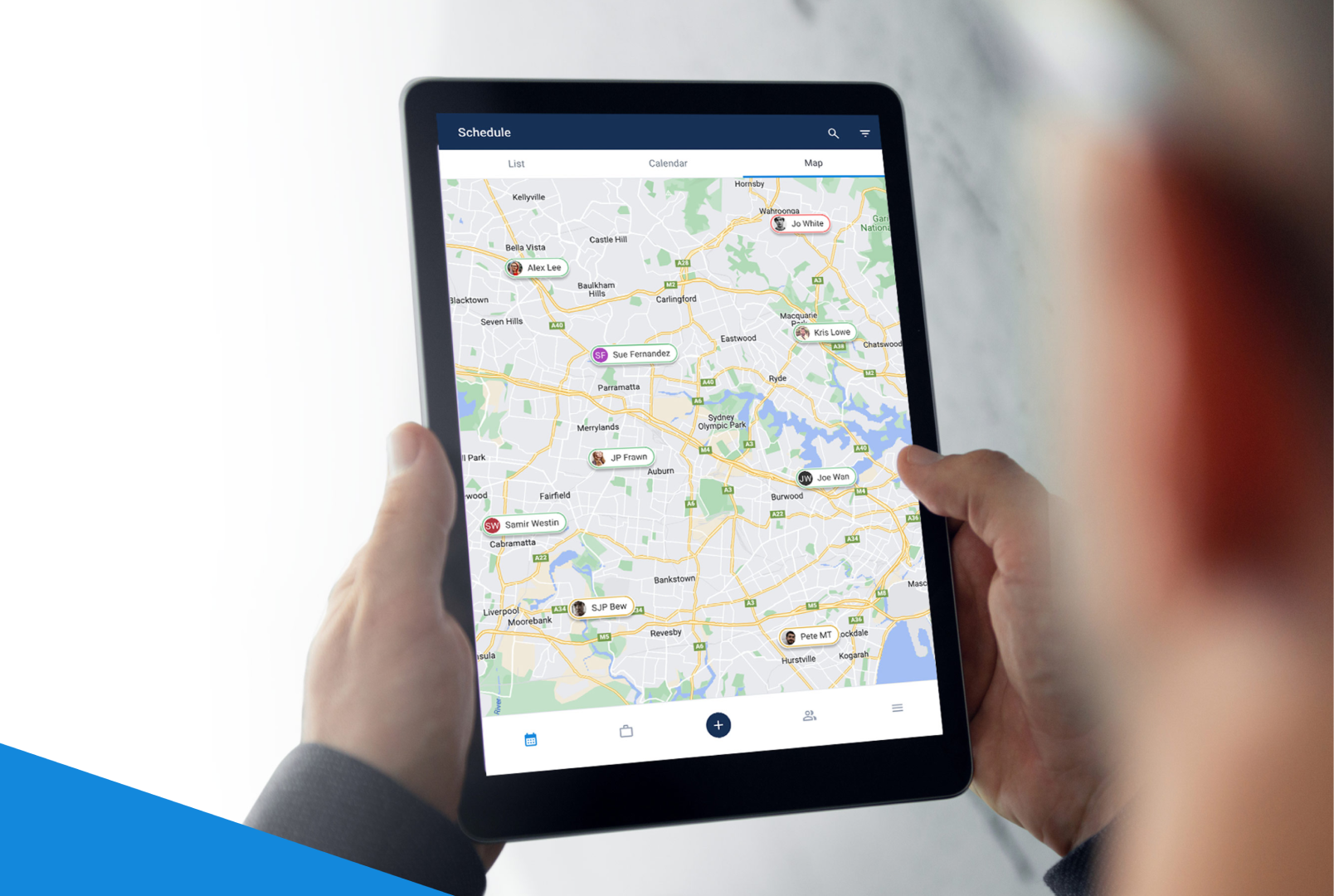
Client
GeoOp
Type
B2B Product Optimisation
Platform
Multi-Platform App
Overview
Download one pager (coming soon)
Retrospective Summary
A job management system to streamline business administration for trade services and mobile workforces
Team
x2 Designers
x3 Full-stack dev
x2 Back-end devs
x2 Testers
x1 Product Manager
x1 Scrum Master
My Role
Product design lead (web app)
Support designer (mobile app)
Process
Agile Software Development
Services
End-to-end design
Product Optimisation
New Feature Development
🚩 The Challenge 🚩
The reality is the passion for your trade clashes with the overwhelm of business admin when you own your own business, leaving tradespeople longing for a simpler solution. Juggling multiple tools which amplifies the frustration, stealing precious time from their craft and personal life.
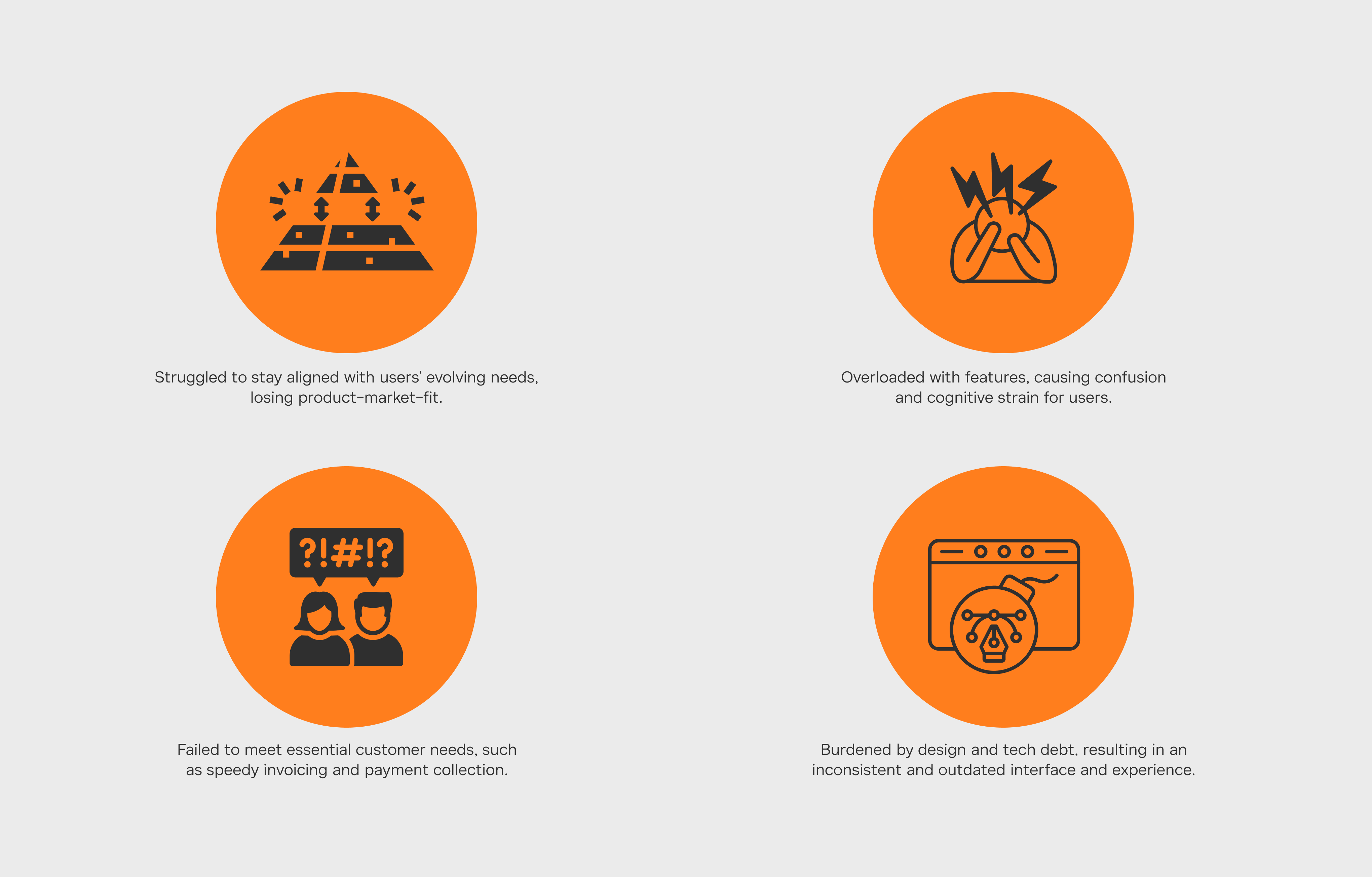
For tradespeople venturing into entrepreneurship, the passion for their craft often collides head-on with the intricate web of business management complexities. The administrative burdens of running a business can quickly overshadow the satisfaction derived from their work, leaving them feeling overwhelmed and drained. The task of juggling multiple tools to manage various aspects of their business only adds to the frustration, creating a sense of longing for a unified, streamlined solution. This pressing need for simplicity and efficiency underscores the urgency for a comprehensive approach that empowers tradespeople to regain control over their time and focus for what truly matters; make money and get back to their personal lives.
⚡️ What we delivered⚡️
GeoOp is a multi-platform job management system for Australian Trades-people and Field Service workers to - run their entire business from anywhere, anytime.
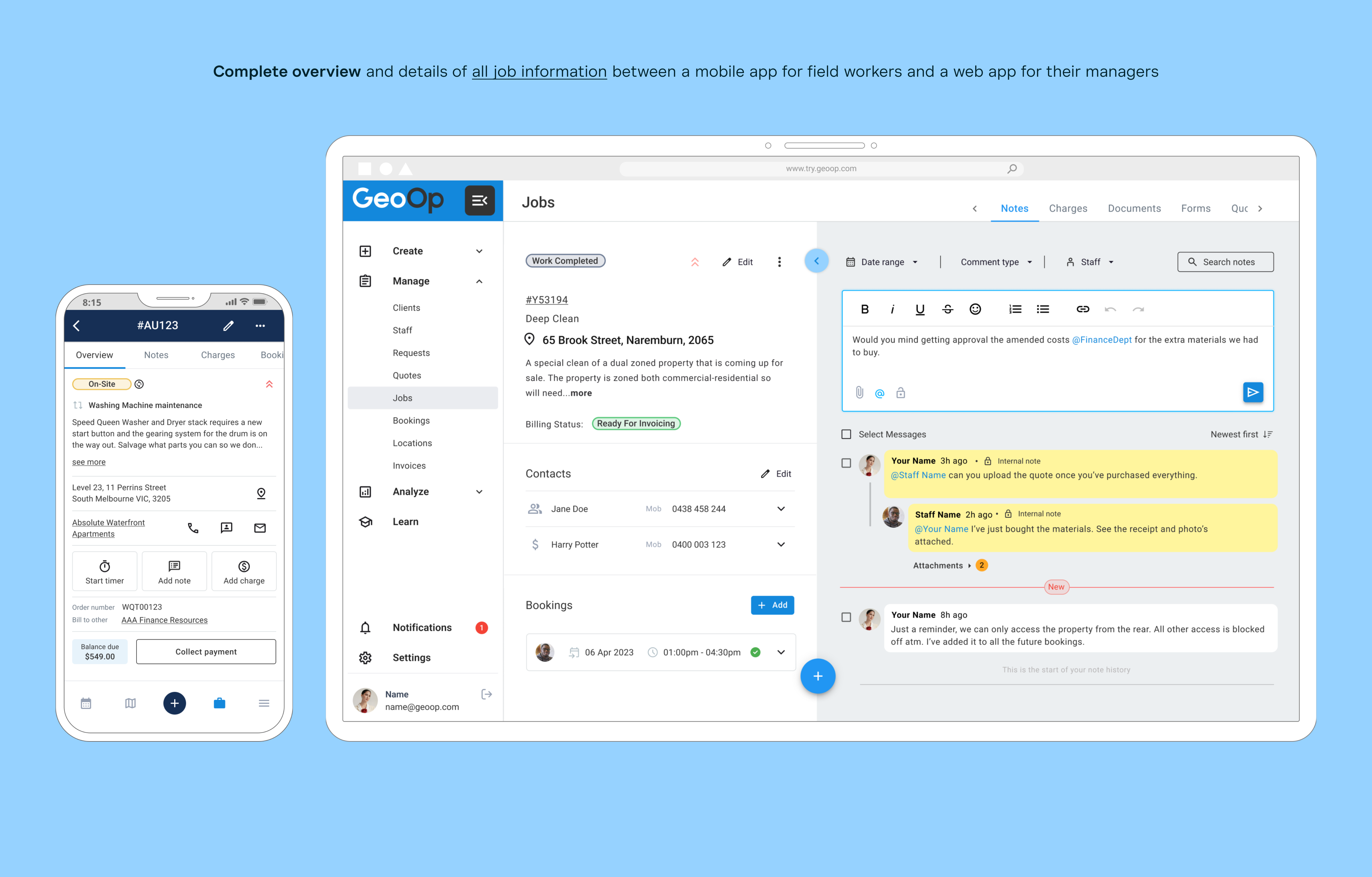
Now with a complete overview and details of all job information that brought accessibility, and scannability of data to the forefront thanks to a reorganised interface and information architecture that provided a consistent view (macro <> micro) of a jobs operational data that appeared more flat than the previous legacy system.
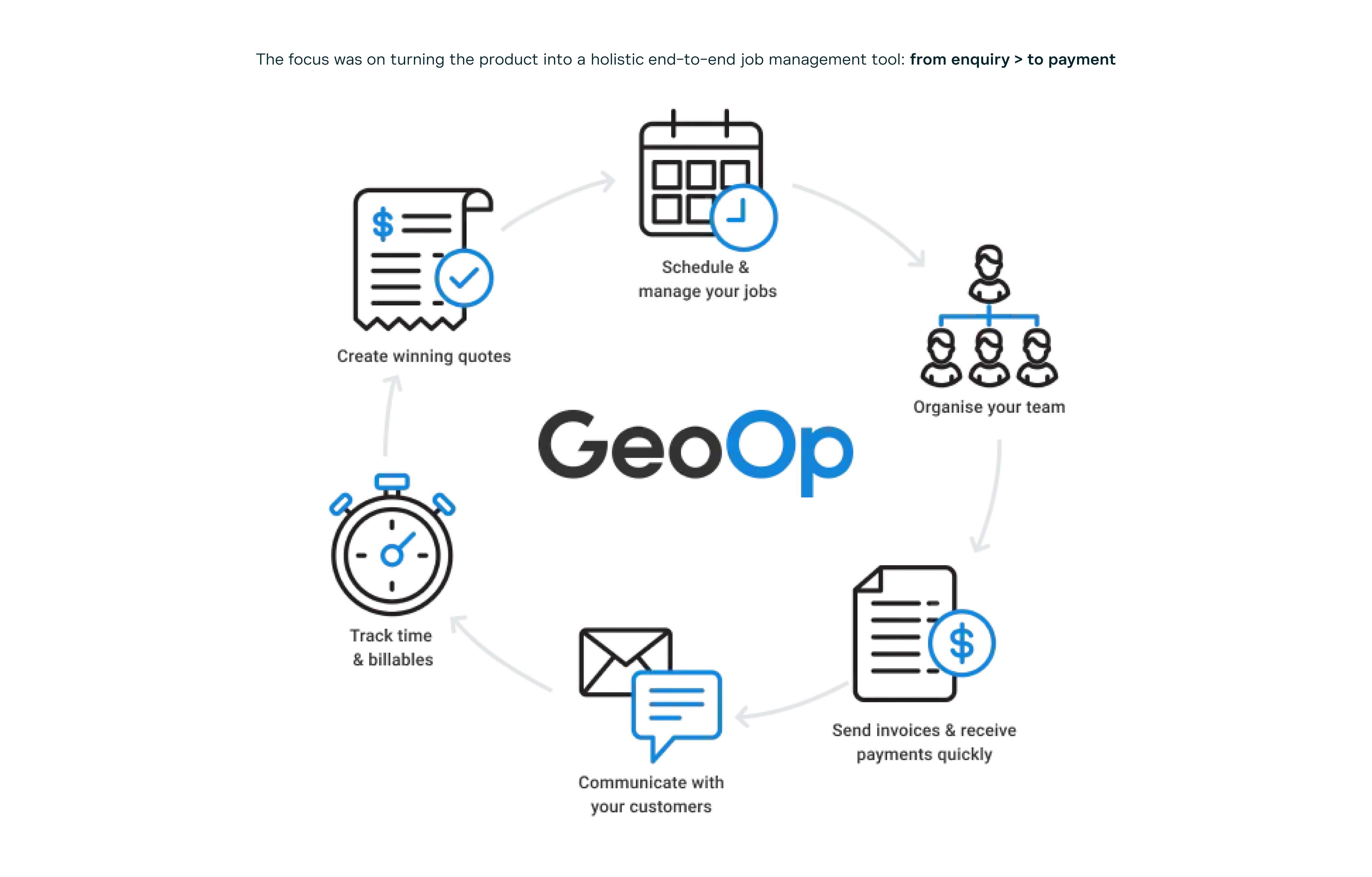
Being able to link all tasks and processes end-to-end for customers finally allowed us to fill the operational gaps that the previous legacy system didn’t allow without customers and users relying on other fragmented tools or manual processes that were either completely disconnected or poorly integrated.
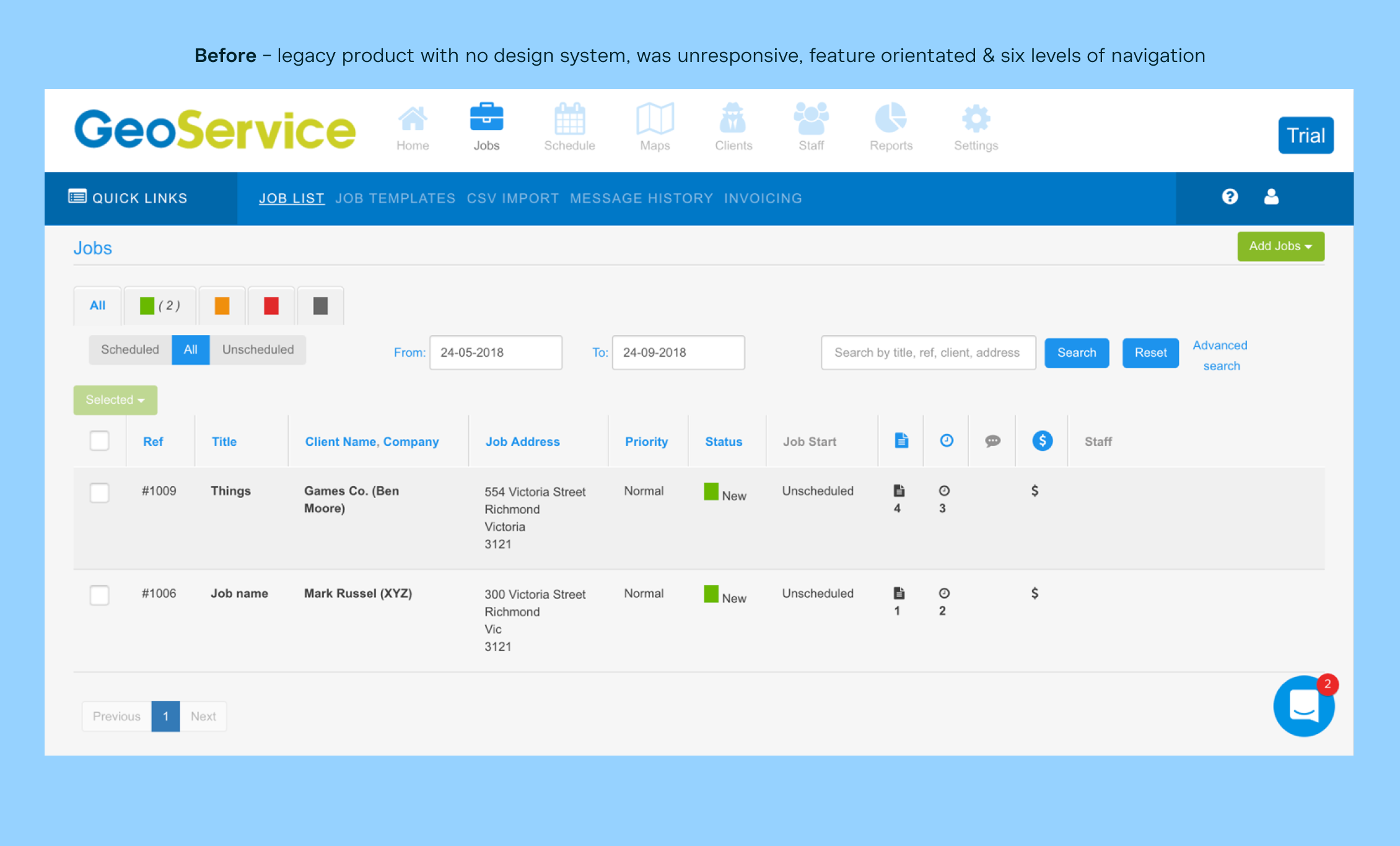
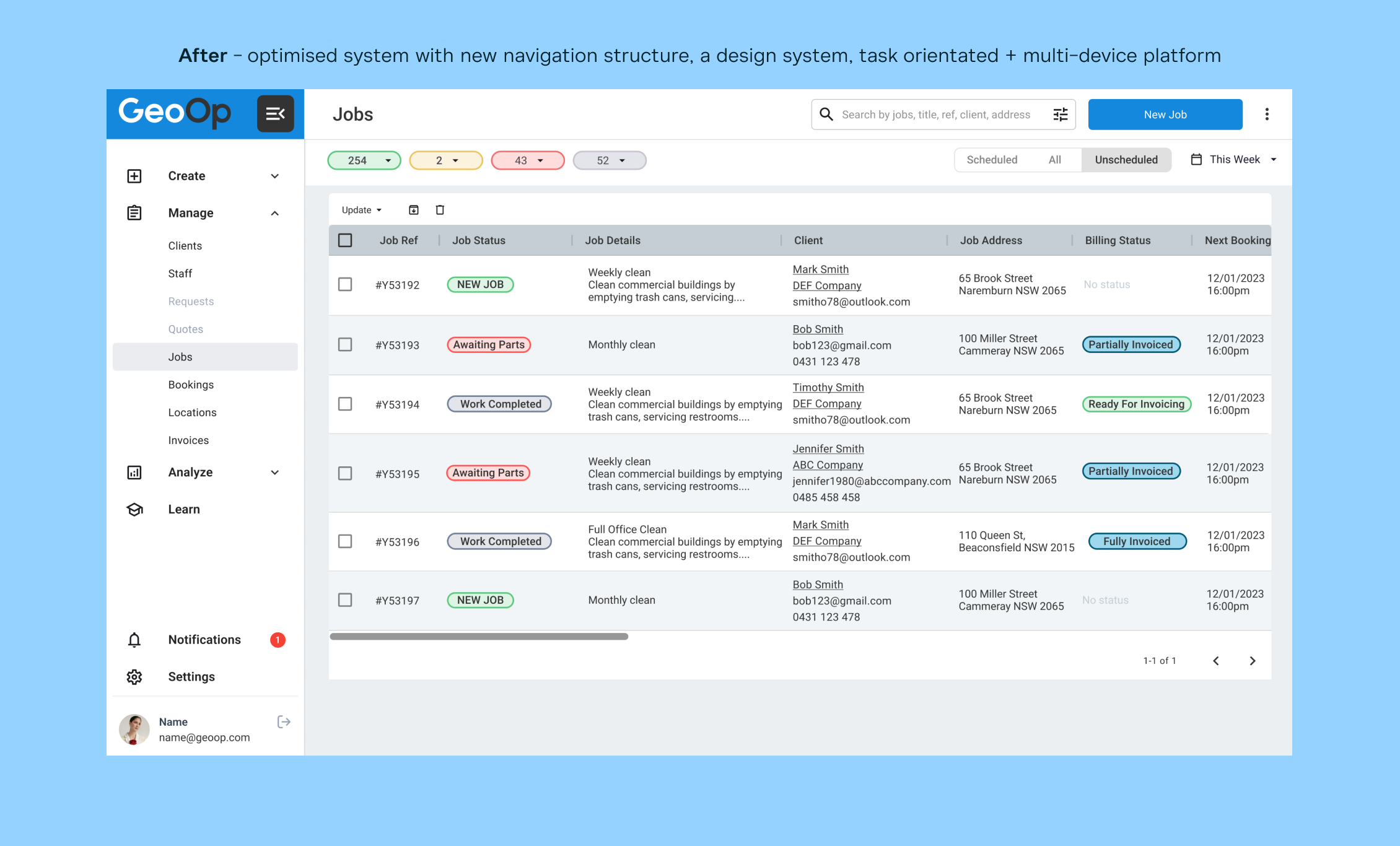
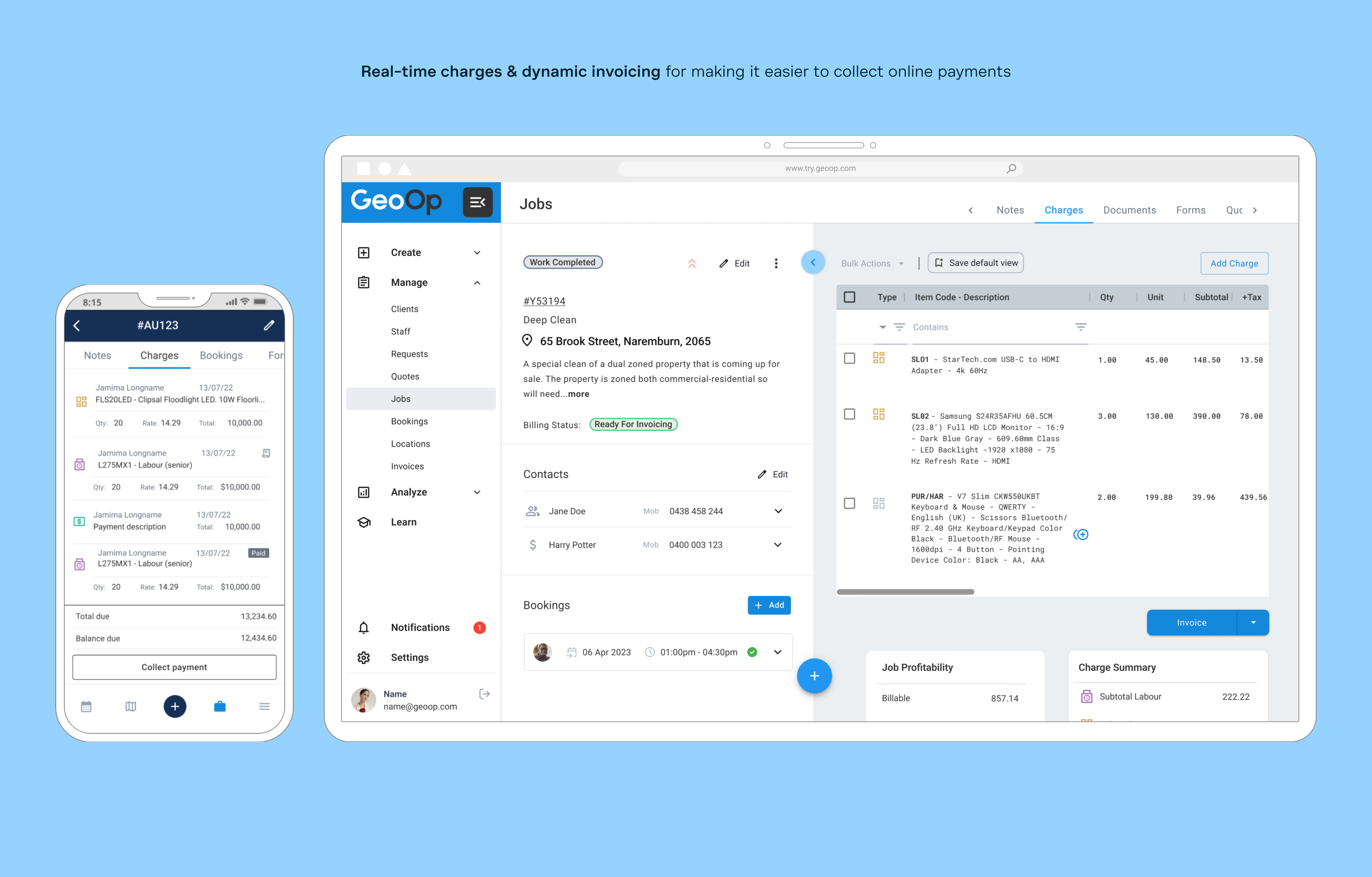
🎯 What were the outcomes 🎯
Impact
Saves between 14-30 hours a week on business administrations tasks for 15,000 customers
Value
Honing in on a more accurate problem-solution fit, that reflected the current needs of customers and users that had evolved from the initial product market fit
Return on Investment
Setting up the foundations for shifting the business and the product towards evolving the product to focus more on business intelligence for tradespeople not just job management.
Benefits
💎 Less paperwork and disconnected admin tools
💎 No need for multiple software tools to run your jobs and business
💎 More accurate visibility; improved scannability and findability of operational data
💎 Real time invoicing and digital payment collection that reduce revenue leakage
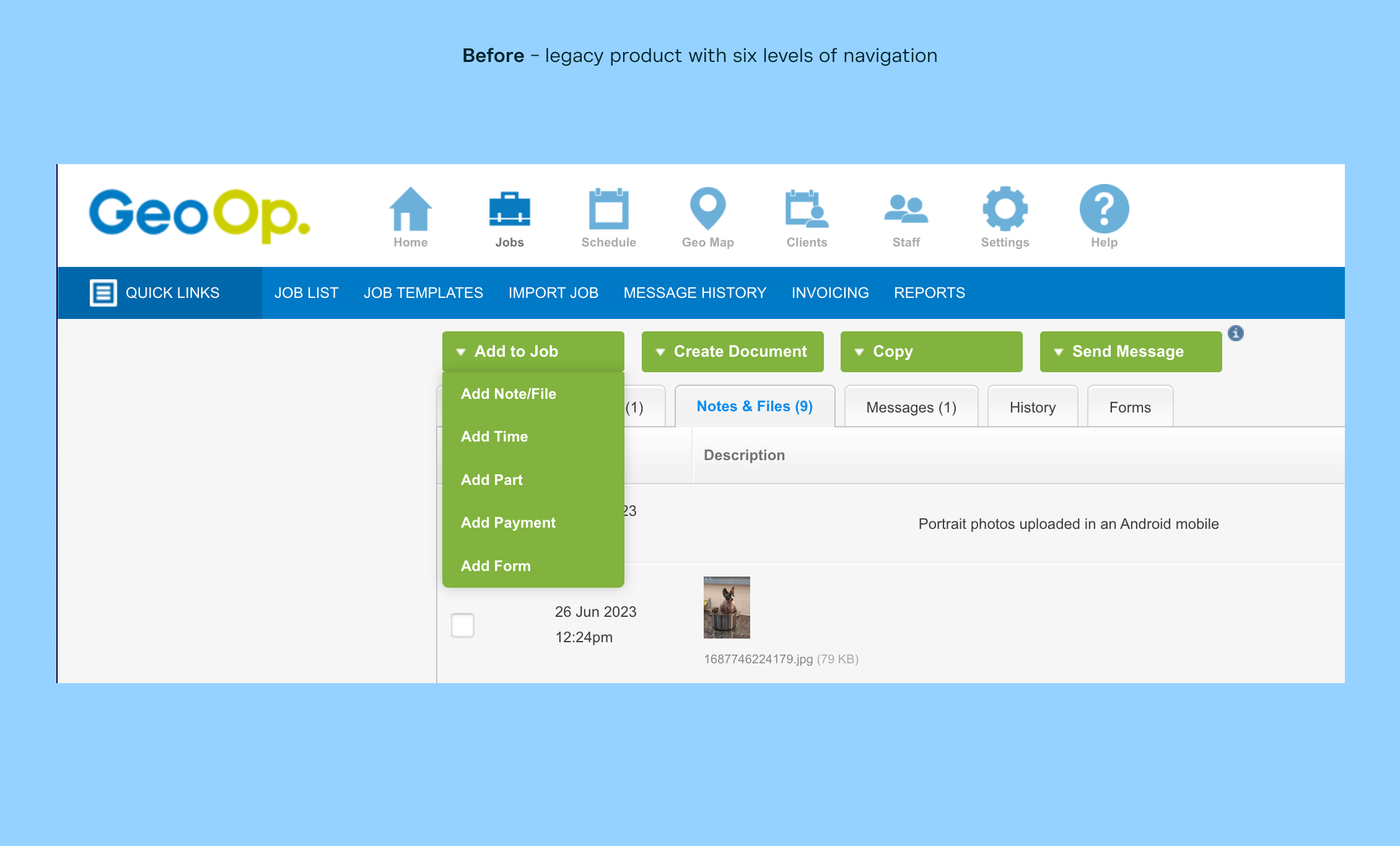

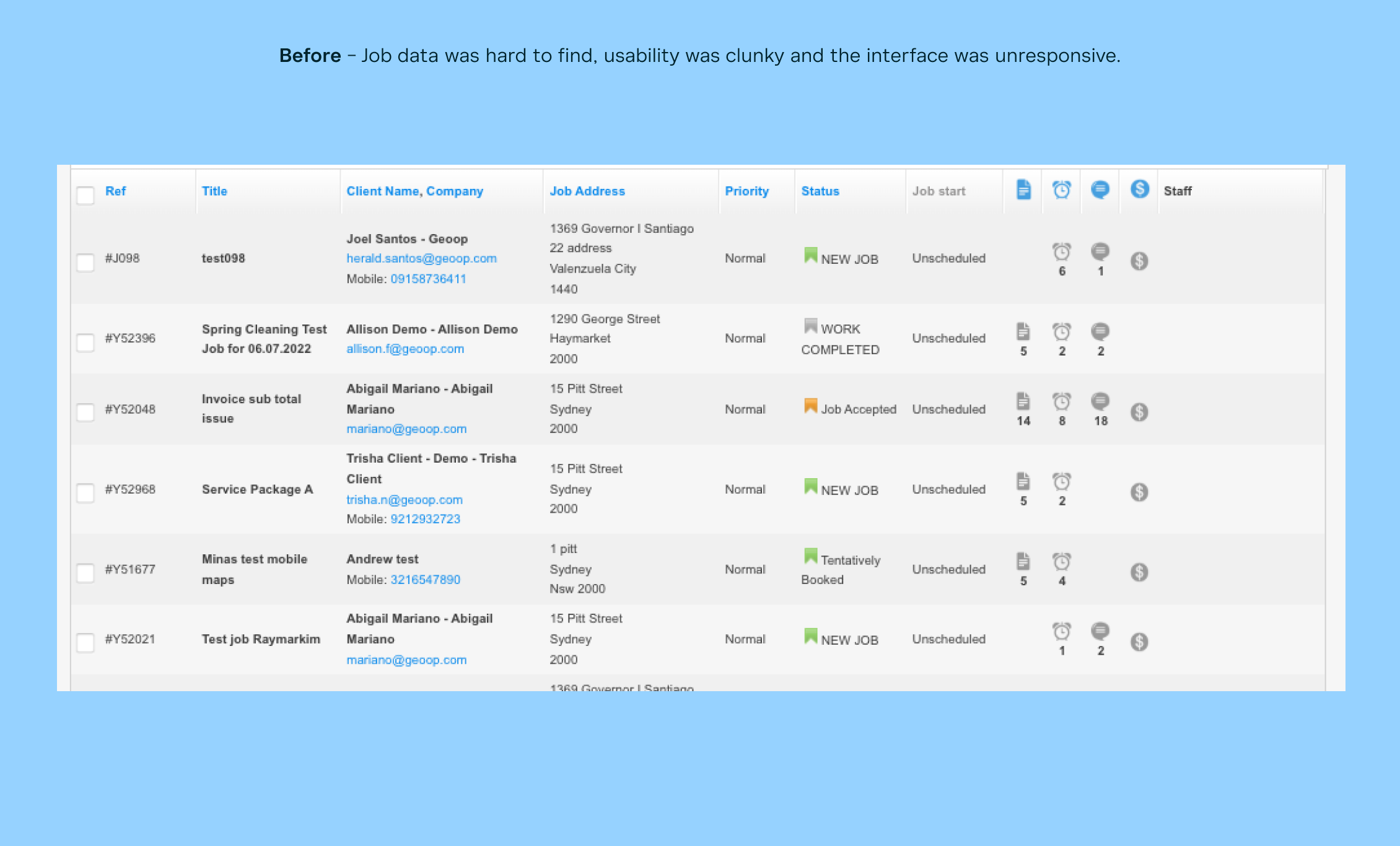
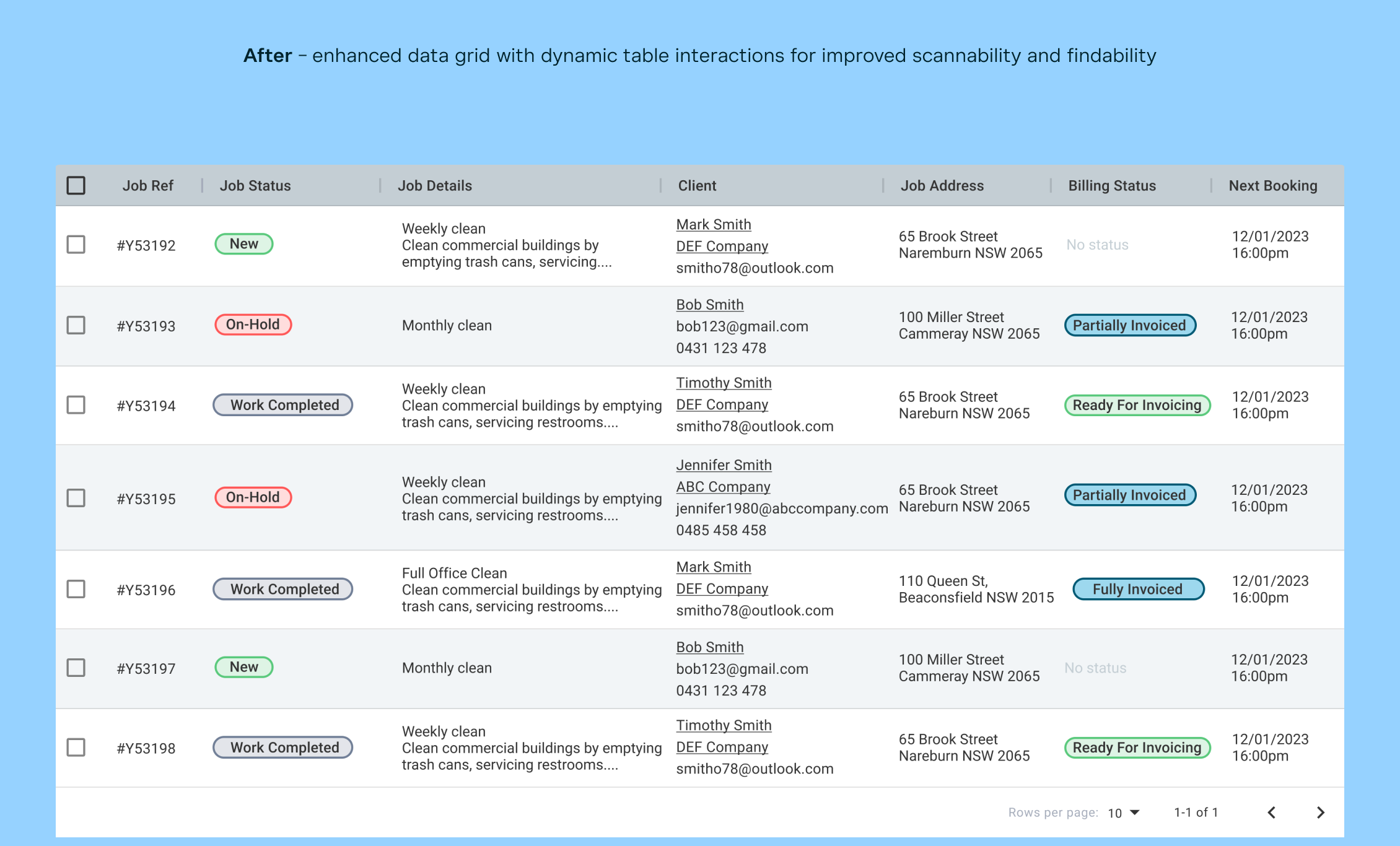
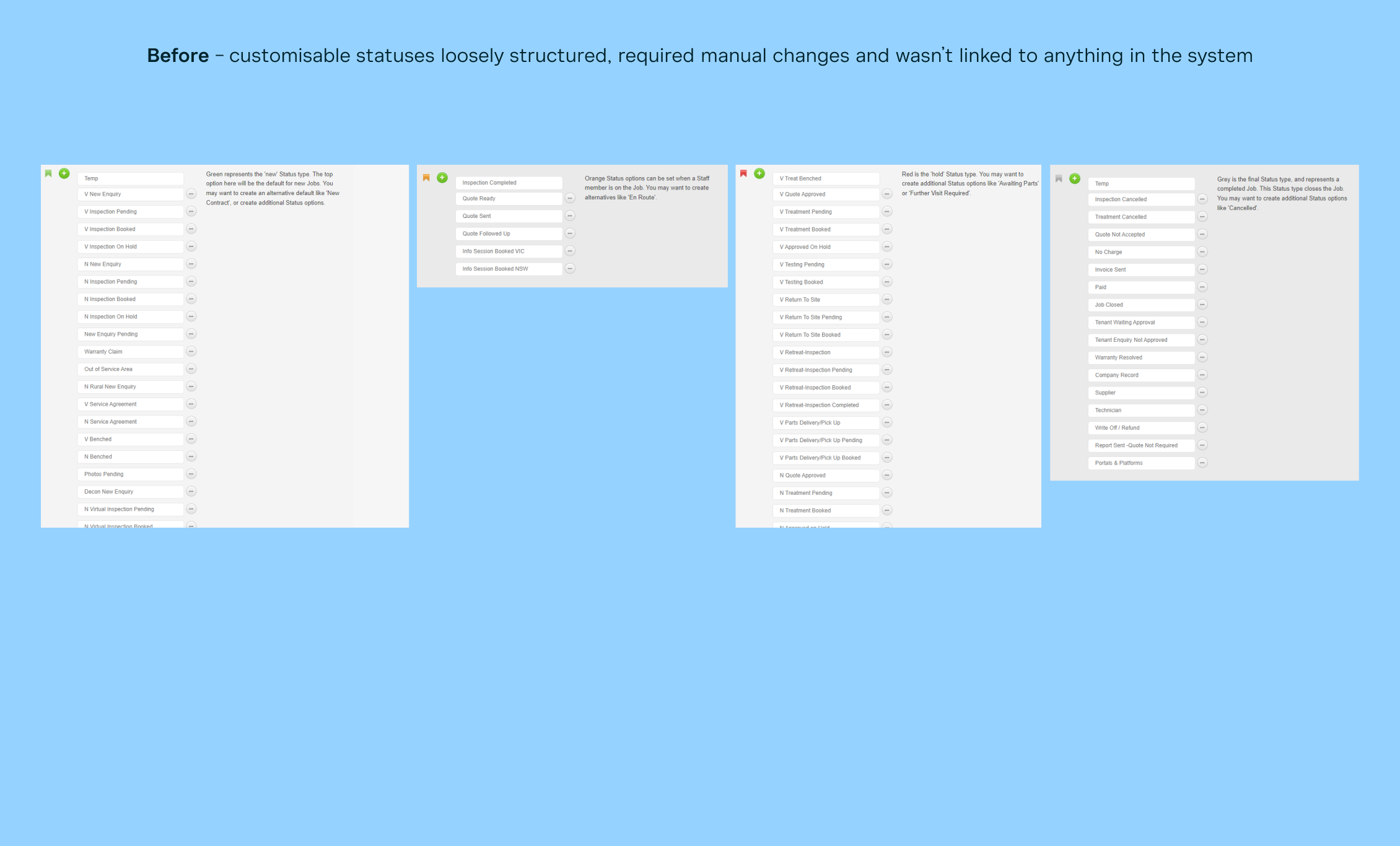
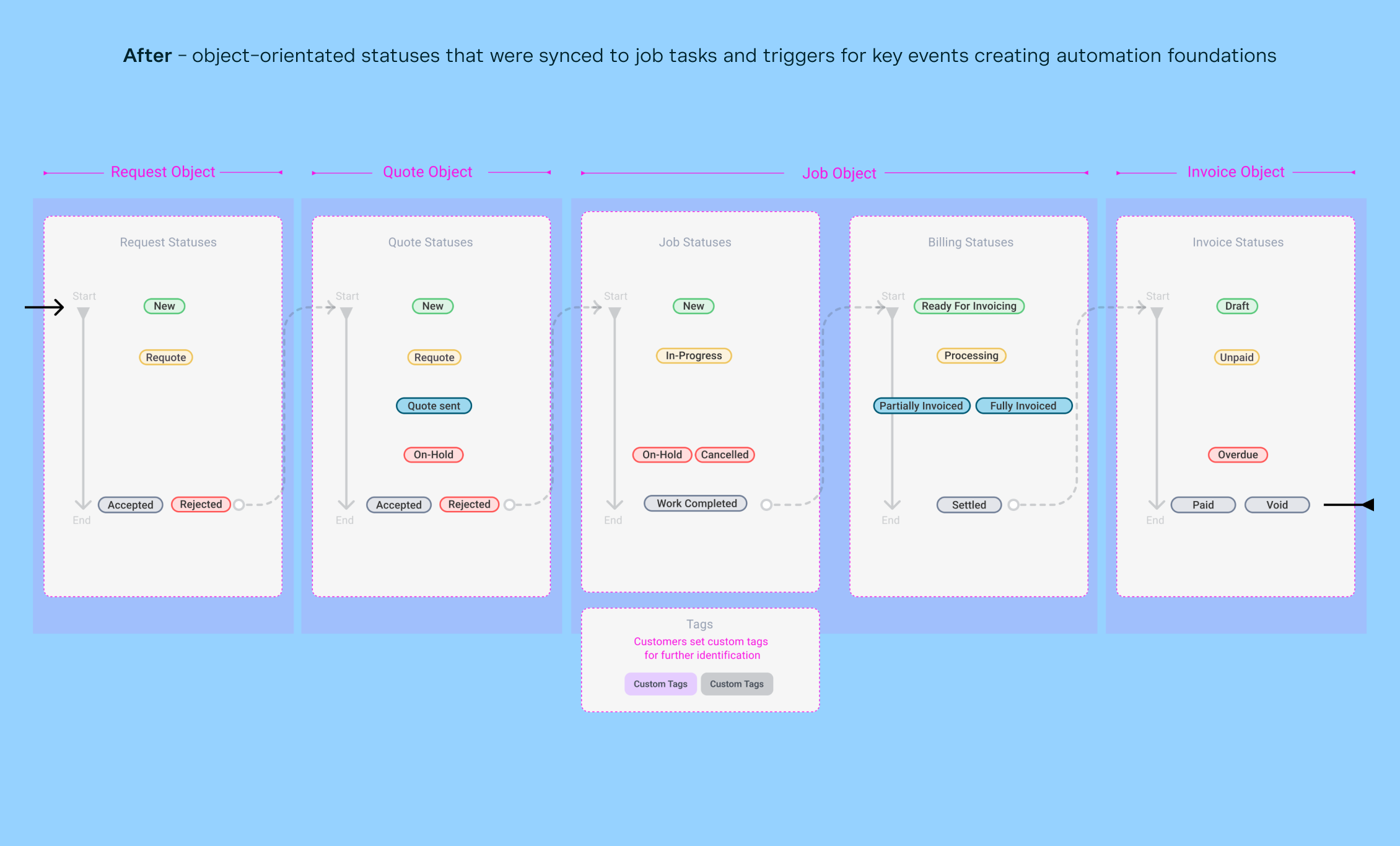
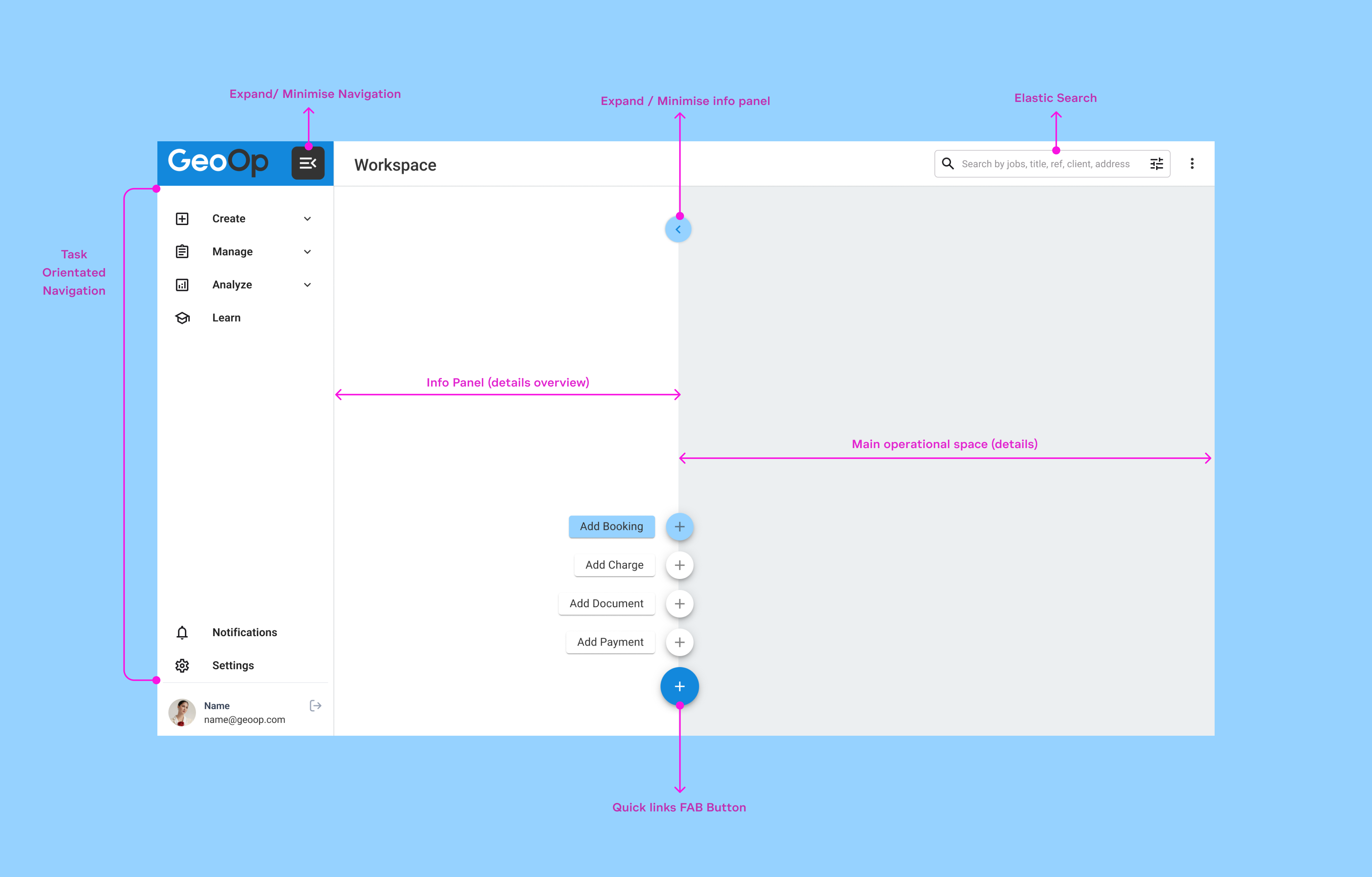
With a reorganised interface and navigational structure that changed from a 'list view' in the legacy version > to a 'data-grid view' in this new optimised version we were able to ensure complete access to every part of the product with minimal clicks and almost no need for tunneling down through menus and pages. Users could now hide/ expand core job details from a drawer that remained accessible as they tabbed through other job tasks - all to drive consistency and learnability.
🔄 How we solved it 🔄
The Process
This was a optimisation initiative for setting up the foundations for the next evolution that shifted the product and the business towards the world of business intelligence for mobile workforces as opposed to just job management. It was an exercise in optimising and enhancing for success at for both product and org level.
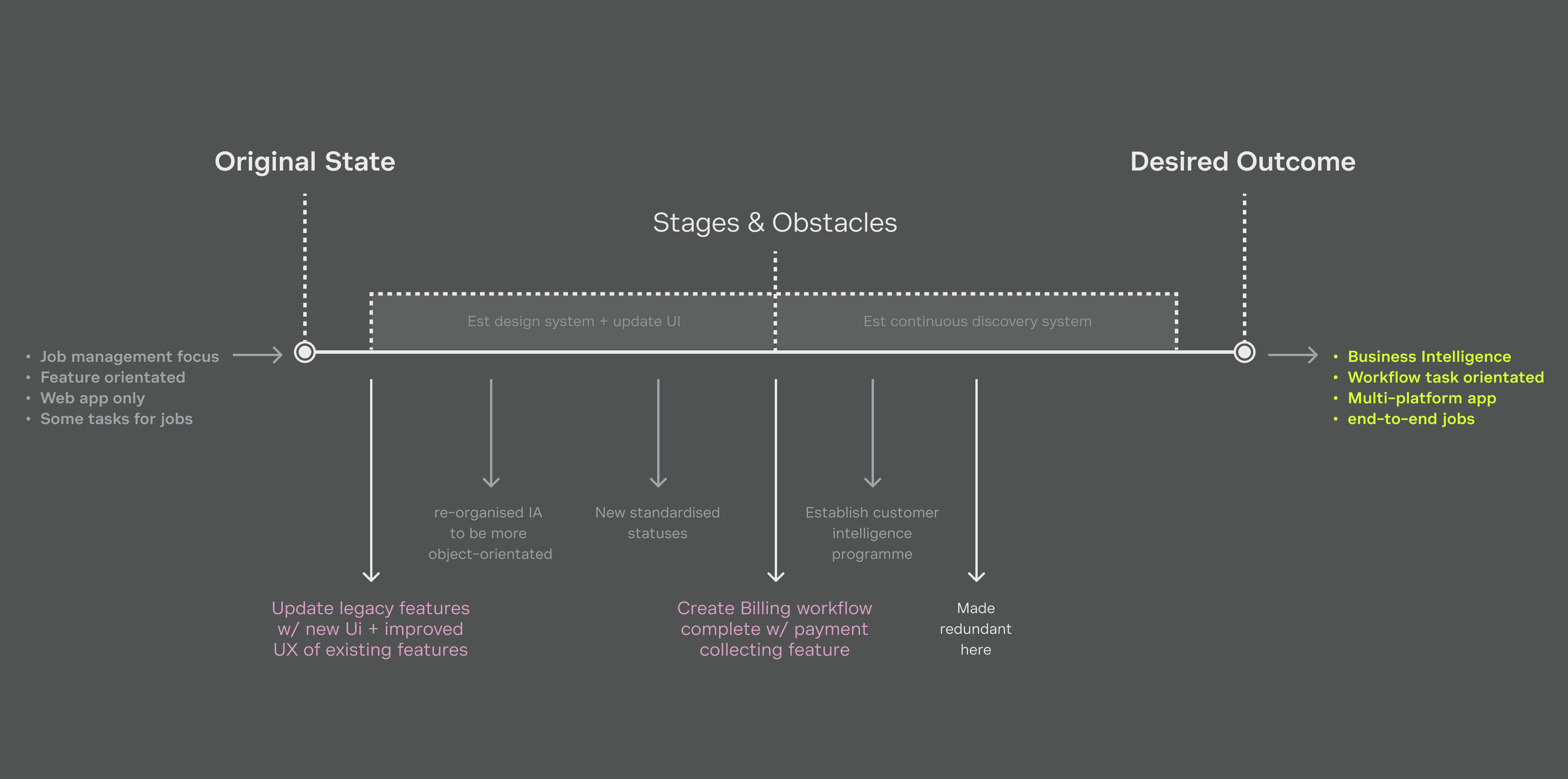
🤓 What did we learn 🤓
The Learnings
💎 Despite recommendations to focus on more value orientated tasks there was a real push from c-suite management to the overall business to focus on chasing sales which conflicted with lots of the research and insights we'd uncovered which showed the disconnect between management and the customer base.
💎 Because we were coming from behind to fix and optimise a legacy product with a plethora of tech and design debt we had to get really strict and economically about what we could change and our prioritisation of what we could/ should deliver on. Which forced us to re-evaluate 'how' we measured value and made decisions.
💎 As a team because we were trying to improve a legacy system 'everything took longer' than we estimated which meant timelines kept getting pushed out and it was a constant juggle to meet the expectations of c-suite management vs customer expectations.
Want help optimising for success?